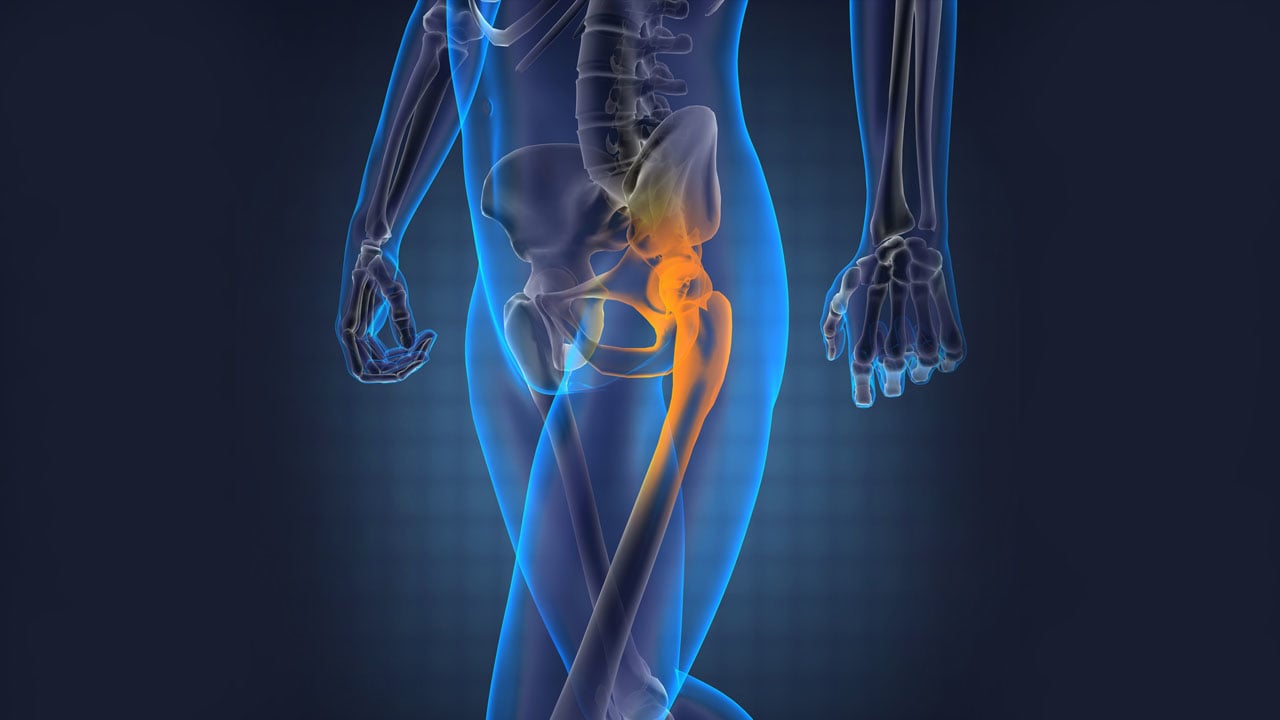A long-term follow-up study from Australia confirms that hip implants with components made of cross-linked polyethylene (XLPE) substantially lower the risk of revision surgery after total hip replacement, reports a study published in The Journal of Bone & Joint Surgery. The journal is published in the Lippincott portfolio in partnership with Wolters Kluwer.
“The use of XLPE has resulted in a significant reduction in the rate of revision at 16 years following total hip arthroplasty for osteoarthritis,” writes Professor Richard de Steiger, MBBS, FRACS, FAOrthA, and colleagues of the Australian Orthopaedic Association National Joint Replacement Registry, Adelaide, South Australia. With less wear and better longevity than implants using conventional polyethylene (CPE) components, the superior durability of XLPE implants may encourage total hip replacement to be performed in younger patients.
Cross-linked polyethylene bearing surfaces were developed to address the problem of wear occurring with hip components made with CPE. Excessive wear sometimes leads to the need for revision surgery, particularly in younger, more active patients. Cross-linking is a process by which the polyethylene molecules are bonded together to strengthen the material.
The study included more than 240,000 patients with hip osteoarthritis who underwent total hip replacement (arthroplasty) in Australia from 1999 through 2016. Outcomes were analyzed according to the type of bearing surface used in the hip implant. Implants with an XLPE bearing surface were used in approximately 199,000 procedures, while implants with CPE bearings were used in 41,000 procedures.
Hip prostheses using XLPE bearings are not new — previous studies have confirmed that they are less prone to wear than CPE bearings. The data from this Australian study provide longer follow-up on the risk of revision surgery, “which ultimately is most important for the patient,” Prof. de Steiger and coauthors write.

The use of XLPE implants increased dramatically during the study period: from approximately nine percent of implants with polyethylene bearings in 2000 to 97 percent in 2016. Average follow-up times after hip replacement were about nine years in the CPE group and four years in the XLPE group.
As early as six months after hip replacement, revision rates were substantially lower in patients with XLPE bearings. Over 16 years, the cumulative rate of revision surgery was 11.7 percent in the CPE group compared to 6.2 percent in the XPLE group.
After adjustment for other risk factors, patients with CPE implants were about three times more likely to have revision surgery after nine years, compared to those with XLPE implants. Revisions directly related to wear of the bearing surface occurred in 0.81 percent of procedures that used CPE versus 0.05 percent of procedures that used XLPE.
A subgroup analysis focused on approximately 18,000 patients who underwent total hip arthroplasty before age 55 found that the 15-year cumulative rate of revision was 17.4 percent in the CPE group versus 6.6 percent in the XLPE group. At seven years, younger patients with CPE hip prostheses were about five times more likely to need revision surgery.
This new study of hip replacement outcomes in patients with XLPE prostheses provides the longest follow-up in the largest series of patients reported to date. The results provide important “real world” evidence that the reduced wear of XLPE bearings translates in a lower risk of revision surgery. “The use of XLPE makes total hip arthroplasty – already one of the most effective operations — even better,” the researchers write.
“Wear-related and implant-longevity issues are particularly important in younger patients, who are generally more active and have a longer life span than their older counterparts,” Prof. de Steiger and colleagues conclude. “We believe that the evidence of reduced long-term wear with XLPE is now so strong that, when a polyethylene bearing surface is used in THA, it should be XLPE, particularly in younger patients.”




